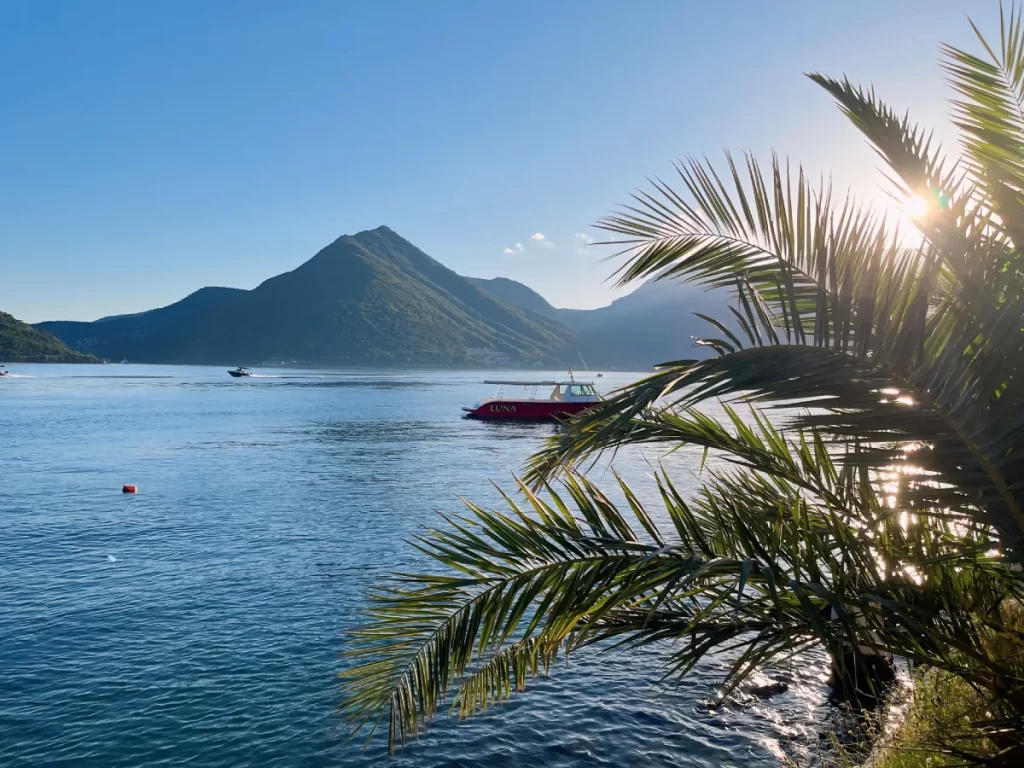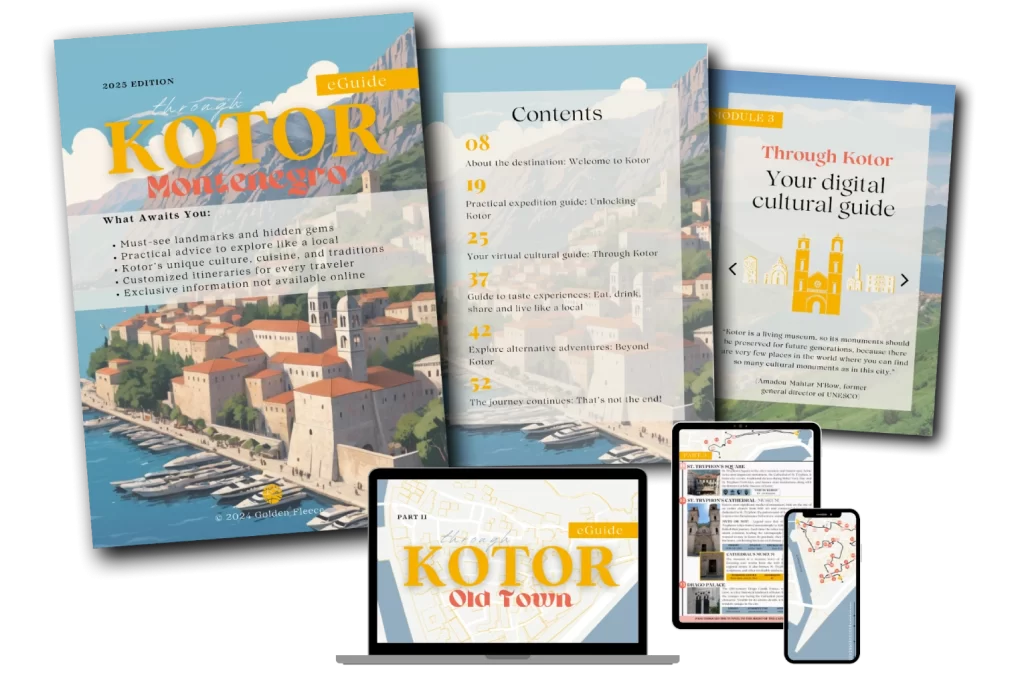Is Perast worth visiting?
If you’ve seen a dreamy photo on Instagram or heard it’s “a cute little town near Kotor,” you’re not wrong — but that’s barely scratching the surface. Perast is not just pretty. It’s profound.
Behind its quiet stone facades lies a legacy that once rivaled global empires. It’s a place where local traditions are older than many nations. A town that tells stories — not through tourist boards, but through the breeze, the stones, and the silence.

eBoka Tip: Come in the late afternoon.
Here’s a trick locals know well: Perast has more sunlight than Kotor.
While Kotor is tucked into the mountains and loses the sun early in the day, Perast keeps it well into the evening — especially in summer. This makes it the perfect late-day escape.
And there’s more. Even during the hottest months, Perast always has a breeze — a gentle wind coming through the narrow Verige Strait (just 250 meters wide), refreshing the town naturally. You’ll feel it the moment you step out of the car.
Want to know where to catch the best sunset? Our Perast Guide has the best spots — plus a few legends to go with them.
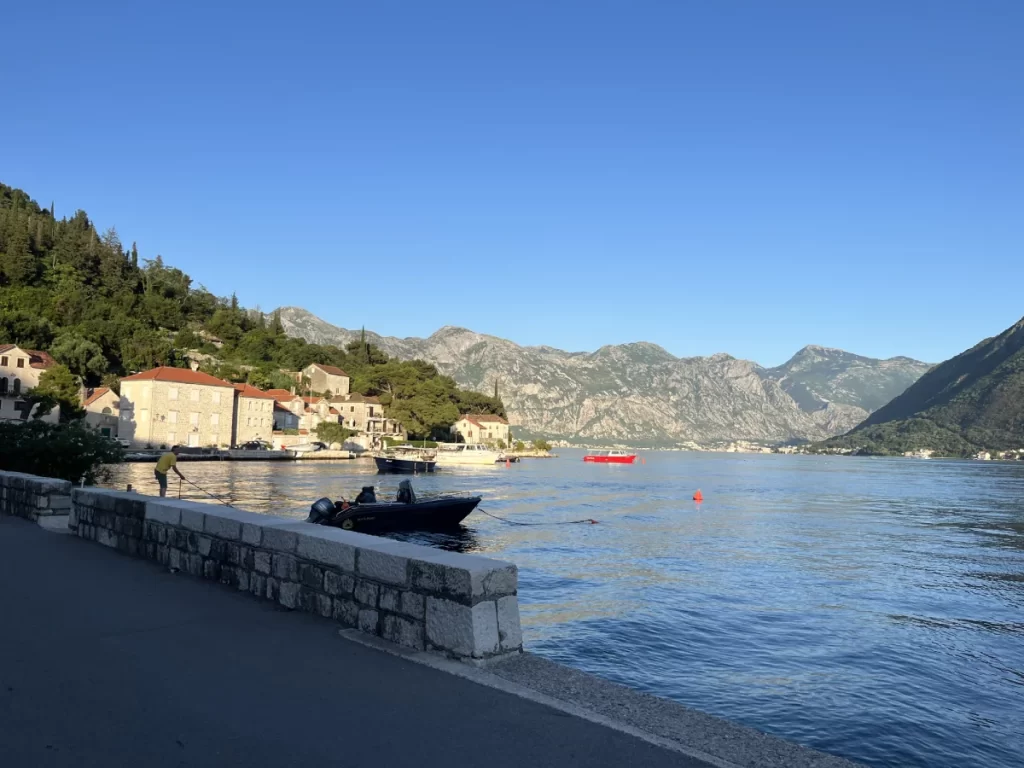
12 brotherhoods, 1 unforgettable story.
Perast didn’t begin as a city — it began as 12 “kazadas” (traditional family brotherhoods). From these close-knit groups grew a town that would change the course of Adriatic history.
It’s hard to believe, but this tiny place once led the way in maritime education: the very first naval school in the Balkans was founded here. Perast’s sailors were respected across the Mediterranean — skilled, educated, and often multilingual. Their wealth built the town’s iconic palaces, many of which still stand in their original baroque beauty.
And if you think this is just a romantic exaggeration, the Perast City Museum is filled with original documents, portraits, and flags — including the last flag of the Venetian Republic, which flew here even after Venice itself fell.
Baroque beauty, compact and alive.
Perast is known as “the baroque town of Boka”. Most of its palaces date from the 17th and 18th centuries — the town’s golden age. You’ll see two main architectural styles here, both of which started in Perast and later influenced buildings across Montenegro and even Croatia.
Everything in town lies on one main street — hugging the sea, while houses and churches rise above it toward the mountain.
Walk slowly. Look up. Behind every stone gate is a story, and from the street you can see nearly the entire town. That’s part of Perast’s magic — it invites you to take it all in, but on your own terms.
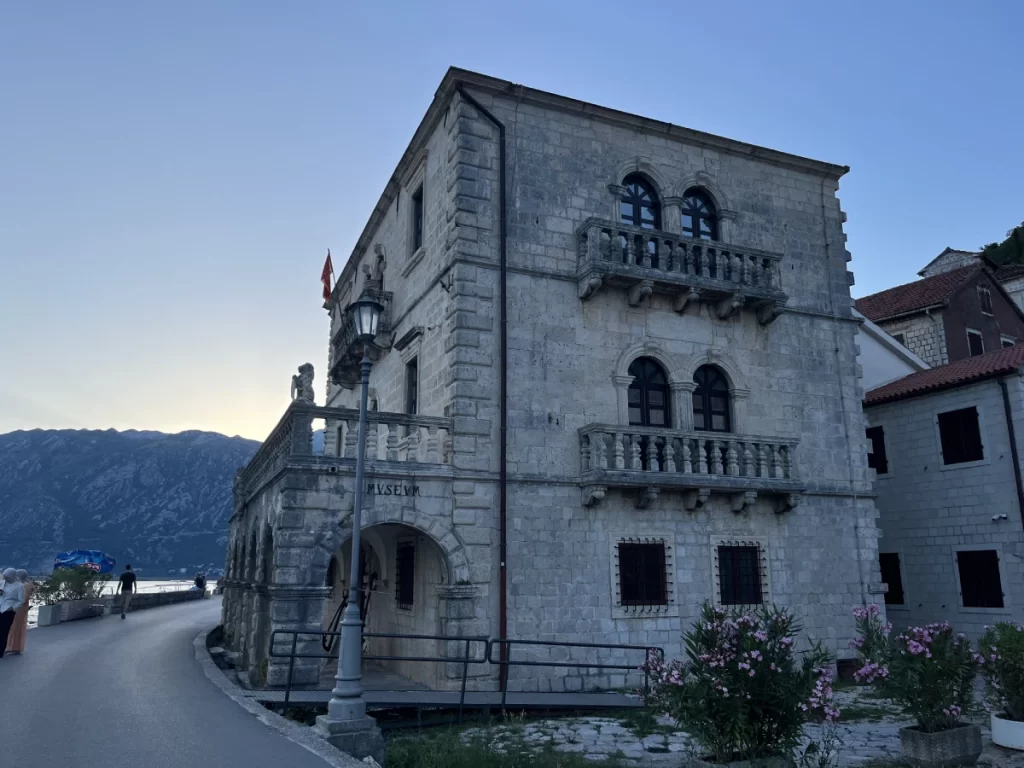
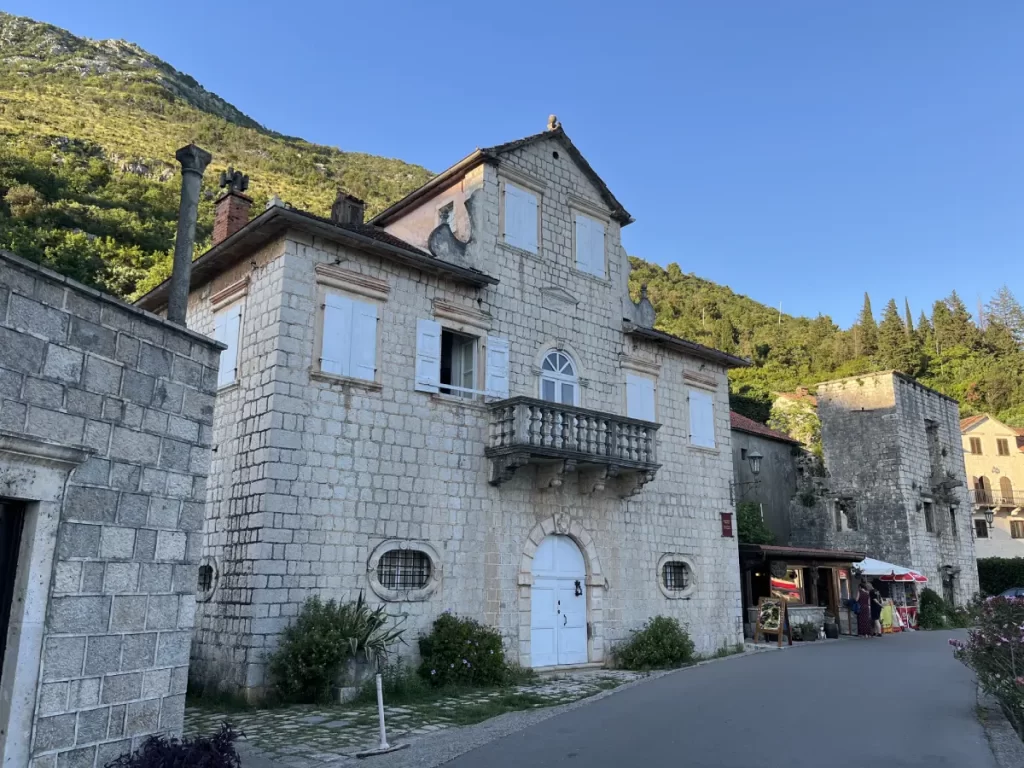
This is not a “top attractions” kind of place.
There’s no point rushing through Perast with a checklist. Instead, we suggest something else: Read the stories while walking. Sit down. Sip wine. Watch the water move.
Our Perast guide was written exactly for this — by a licensed guide who worked in the local museum, packed with local voices, fascinating history, and hidden gems that maps never show.
One of our favorite features? A playful “find the church” game — because this tiny town has more churches than most cities, built between the 16th and 18th centuries.

Two islands, endless legends.
Right across from town are two postcard-perfect islets:
- St. George, a natural island and the final resting place of many local captains.
Our Lady of the Rocks, an artificial island built stone by stone by generations of sailors, fulfilling a sacred vow.
The stories tied to these islands are so extraordinary, you might doubt they’re true — until you visit the museum inside the church on Our Lady of the Rocks, where real historical artifacts prove otherwise.
Want to know why sailors threw rocks into the sea for centuries? Or how paintings there were embroidered with human hair? It’s all in the guide, with photos, legends, and facts that will leave you speechless.

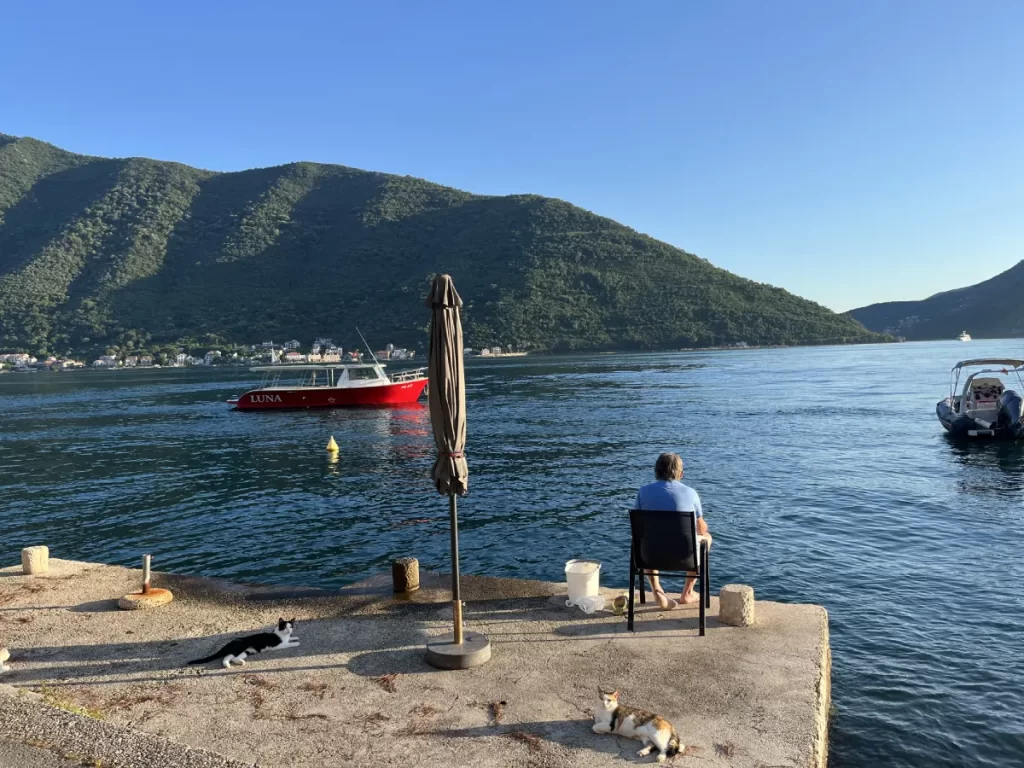
What do locals say about Perast?
We spoke to the few remaining locals (fewer than 300 people live here full-time) and asked them what life is like in a town that feels frozen in time.
They told us about festivals that go back 500 years — like the famous shooting of the rooster from the shore — and how even those rituals had to evolve with modern times.
One American traveler we met told us:
“I’ve been around the world. But when I found Perast, I bought a house here and never left.”
That says something.
Perast isn’t just a place — it’s a feeling.
It’s the silence after the bells. The scent of stone warmed by sun and sea. The way shadows fall on baroque walls in the evening light. And the sense that, just maybe, you’ve stepped into a dream — or a story that’s still being written.
So, is Perast worth visiting?
Only if you want to feel something real.
📘 Ready to explore differently?
Buy our Perast Guide — written by museum insiders, full of stories, expert commentary, and real local flavor. It’s made to walk with you — not to lead you.
